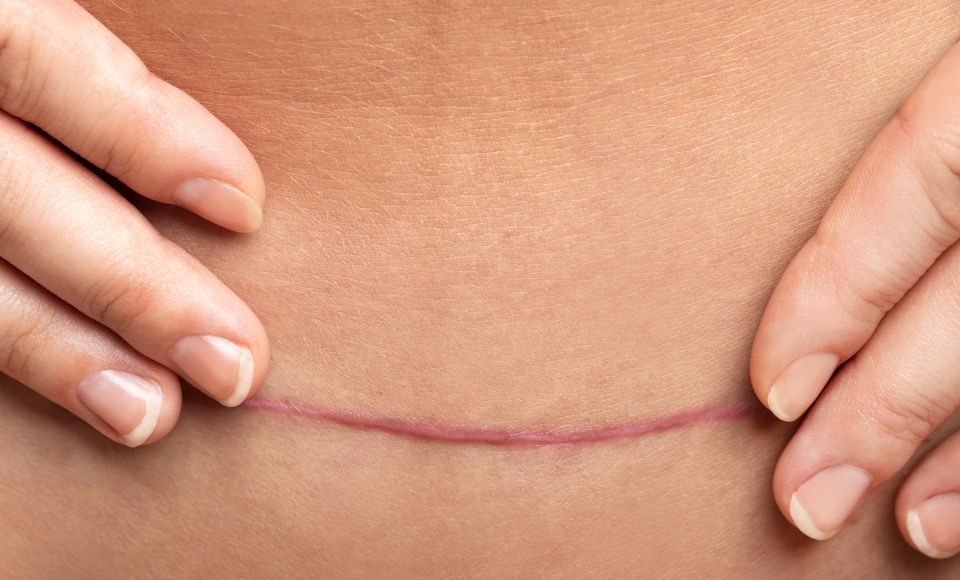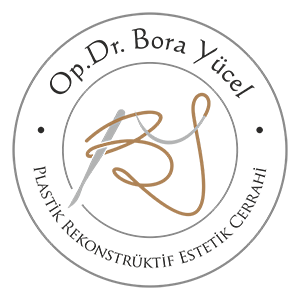
When patients recover completely after tummy tuck, the question 'How can tummy tuck scars be reduced?' comes to mind. Some studies can be done to reduce scars. I will explain these studies starting from simple home treatments to advanced options. First of all, let's see what the difference is between a full tummy tuck and a mini tummy tuck.
Full Tummy Tuck:
A full tummy tuck removes excess skin and fat deposits in the abdominal area, as well as reconstructing the internal muscles, resulting in a flatter and firmer abdominal profile. This procedure is often preferred to correct loose skin and separated muscles that occur postpartum or after significant weight loss. It usually targets excess skin above and below the belly button. It involves an incision from the bikini line through the buttocks to the hips, making it possible to achieve both aesthetic and functional results.

Mini Tummy Tuck:
A mini tummy tuck is a less invasive option, often suitable for patients with milder corrections or less excess skin. It is performed through an incision smaller than the bikini line (approximately 8 inches) and usually targets excess skin below the belly button. This procedure is ideal for patients who want to correct laxity in the lower abdomen and achieve a firmer appearance.
How can scars be reduced after a tummy tuck?
Below we have written 10 tips and treatments to help you reduce your tummy tuck scars.

Follow the care instructions
After a tummy tuck, it is critical that you follow my instructions to the letter to minimise scarring. Advice on hygiene and wound care will help your incisions to heal properly and leave a less prominent scar. These instructions will help you to best manage your post-operative period and optimise your results.
Monitoring Infection Risk
There is always a risk of infection in the postoperative period. If any incision is suspected to be infected, a doctor should be consulted immediately. Infected incisions can lead to more prominent and permanent scars.
Skin Care and Moisturising
In the postoperative period, many patients may feel the urge to start applying moisturiser directly to the scars. However, taking this step directly to the wound before the incisions are closed may prevent the incisions from healing properly and increase the risk of infection.

Sun Protection
As the skin in the suture area is renewed, it may react differently to the sun. Therefore, it is important to protect the scars from the sun. However, instead of using sunscreen, it will be more beneficial to cover your scars with clothes when you go out.
Avoid Irritating Products and Clothing
To promote healing of scars and avoid irritation, avoid irritating products and clothing that can damage your skin. In particular, avoid coarse-textured or synthetic fabrics that touch the area of the scars. Such materials can cause friction and irritation to the delicate skin around the scars, which negatively affects the healing process. Instead, opt for soft and breathable materials such as cotton.
Using Silicone Gel
Silicone Gel Layer: 1-2 mm thick silicone layers can be applied on the wound. There may be irritation on the skin due to continuous application, it is necessary to take a break from time to time.

Dermapen
It has been determined that if it is performed a few months after the surgery, it causes the stitch scars to heal better and decrease. The best results are obtained in patients who enter the first Dermapen sessions within 6-7 weeks after surgery. It is a professional application applied by a doctor. In this application, a device that creates micro holes in the skin is used. With this application, collagen production in the skin increases and the natural repair mechanism of the skin is stimulated. Dermapen or Skinpen can also help Collagen induction treatment.
Laser Treatment
It is an application that encourages new skin cell production to close damaged skin cells. Reduces the appearance of scars. Even if the application does not completely remove the stitch scar, it effectively minimises it. The laser is used to reconstruct the skin and reduce suture scars by breaking down the cells in the suture scars.
Steroid Applications and Keloid Scar Treatment
Steroid applications can be used to reduce problems such as hyperaemia (redness), hypertrophy (growth) or hyperpigmentation (discolouration) in postoperative suture scars. Steroids soothe the skin by speeding up the healing process and allowing the skin to build up.
Treatment options for keloid scars are used to reduce the growth of keloid scars. These include;
Corticosteroid injections: Corticosteroid injections are made into the scar, slowing the growth of the keloid scar.
Laser treatment: Laser therapy restructures the skin by breaking down the collagen under the skin.
Topical treatment: Topical treatments include silicone gels, creams and plastic patches.
Keloid scar treatment requires a multifaceted approach and should be combined among multiple treatment options.
Surgical Reduction of Abdominoplasty Scar (Scar Revision)
Surgical reduction of abdominoplasty scars is called scar revision. Scar revision is a surgical procedure to improve the look and feel of postoperative suture scars.
Since scar revision is a surgical procedure that usually accesses the tissue under the skin, the suture marks on the skin are not reduced, but the tissue under the skin is reshaped. This means that there are fewer suture marks on the skin and causes the skin to be softer and more supple. Scar revision after tummy tuck surgery is usually recommended for people with large suture scars or too much tension on the skin.

